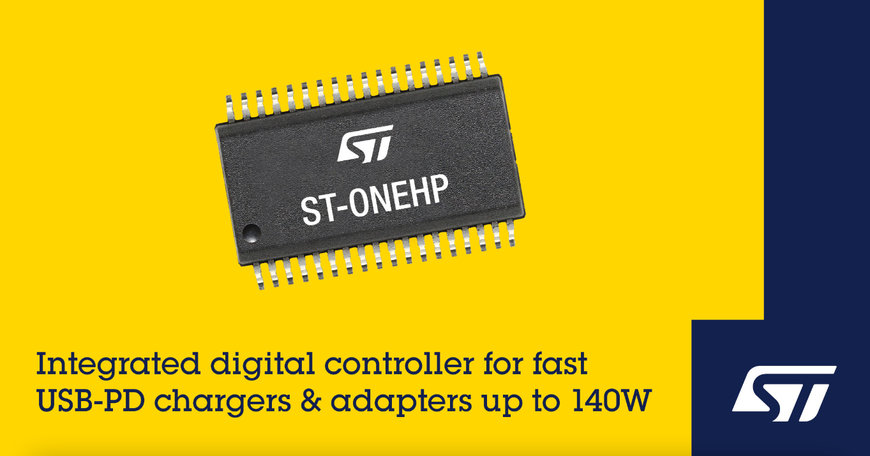www.electronics-usa.com
28
'23
Written on Modified on
ST News
STMICROELECTRONICS EXPANDS ITS ST-ONE CONTROLLER FAMILY
STMicroelectronics has introduced the ST-ONEHP integrated digital controller for USB power delivery applications up to 140W.

STMicroelectronics has introduced the ST-ONEHP integrated digital controller, the world’s first IC certified by USB-IF according to the USB Power Delivery Extended Power Range (USB PD 3.1 EPR) specification.
As the third controller in the ST-ONE family, the ST-ONEHP has 28V output capability to simplify building chargers and power adapters rated up to 140W. Essential features including secondary regulation and the USB PD communication interface are integrated, saving bill-of-materials costs as well as PCB size and complexity. Built-in synchronous rectification helps maximize efficiency and reinforced galvanic isolation permits a solution that is both compact and safe.
Inside the ST-ONEHP, an Arm® Cortex®-M0+ microcontroller maintains overall control. The MCU is supplied pre-loaded with certified USB PD firmware, which eases end-product approval to qualify for the USB logo. With 64KByte of flash storage, the MCU provides room for customizing the power-conversion firmware.
The ST-ONEHP is well suited to use with ST’s MasterGaN single chip, integrating the Company’s third-generation gallium nitride (GaN) power transistors and optimized gate drivers. The SiP eases the adoption of GaN technology in energy-conscious applications to realize benefits including superior thermal performance and switching efficiency compared to conventional silicon transistors.
By combining the ST-ONEHP controller and a 9mm x 9mm MasterGaN1 half-bridge device, ST has produced the EVLONE140W reference design smaller than a standard 65W laptop charger. Its volume of 90cm3 equates to an industry-leading power density of 25W/in3, while the peak efficiency reaches beyond 94%.
From an environmental perspective, the charger can use just a quarter of the plastics and is 2% more efficient than average chargers. Using these products in all chargers produced worldwide would save 3.5 million tons of CO2 emissions.
www.st.com

